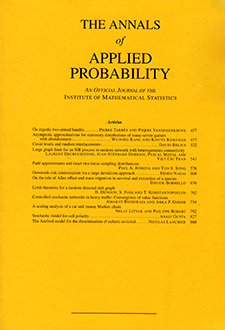Abstract
Here is a new genetic algorithm. It is built by randomly perturbing a two operator crossover-selection scheme. Three conditions of biological relevance are imposed on the crossover. A new selection mechanism is used, which has the decisive advantage of preserving the diversity of the individuals in the population. The attractors of the unperturbed process are particular equifitness subsets of populations endowed with a rich structure. The random vanishing perturbations are twofold: local perturbations of the individuals (mutations) and loosening of the selection pressure. When the population size is greater than a critical value which depends strongly on the optimization problem, their delicate asymptotic interaction ensures the convergence (possibly in finite time) of the population to the ideal attractor whose populations contain all the maxima of the fitness function. The process explores without respite the neighborhoods of the best points found so far (instead of focusing on a particular point) and finds simultaneously all the global maxima of the fitness function; it seems to be the first cooperative search procedure of this kind.
Citation
Raphaël Cerf. "A new genetic algorithm." Ann. Appl. Probab. 6 (3) 778 - 817, August 1996. https://doi.org/10.1214/aoap/1034968228
Information





